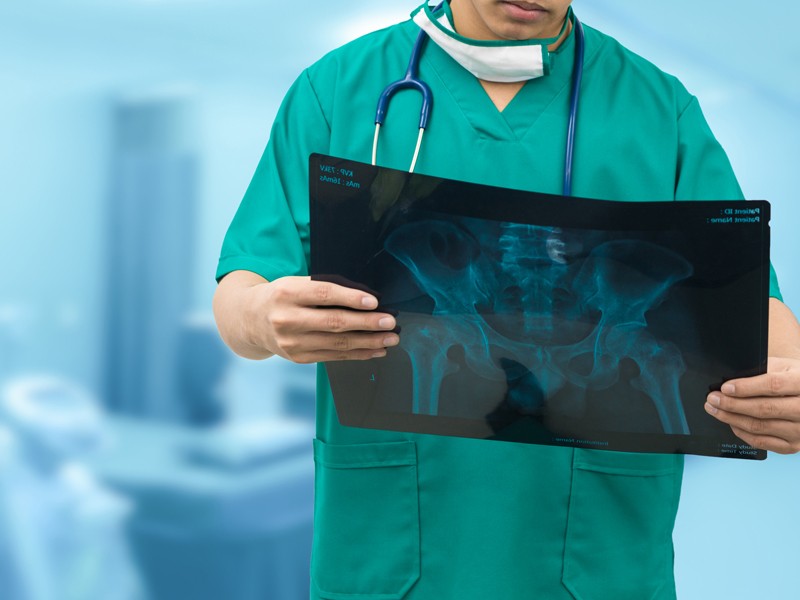Hysterosalpingography

Hysterosalpingography (HSG) is a technique used to diagnose the anatomical structure of the inner uterine cavity and fallopian tubes. The doctor checks the integrity, passivity and condition of the uterus and tubes with the help of x-ray contrast fluid.
There are 2 types of procedures, they depend on the visualization method. The first uses x-rays, the second uses an ultrasound machine.
HSG is used to support previous tests and to confirm primary diagnosis. The accuracy of manipulation is about 85% Most often, it is prescribed to women with a history of frequent miscarriages, ectopic pregnancy, major inflammatory processes of the genitals. The woman needs to come to the hospital for the procedure. Because HSG is done in a private office under the supervision of a medical team.
Markers
This manipulation is done to visualize the anatomical structure of the uterus and tubes.
Therefore, the indications for the procedure are:
- blockage and other damage to the fallopian tubes (adhesions, obstruction, atresia, fistulas)
- abnormal structure of the uterus (two-horned, saddle-shaped uterus, uterine hypoplasia, septum in the uterine cavity, adhesions)
- fibroids, polyps and other neoplasms of the uterus
- foreign bodies of the uterus, injuries, ruptured tubes
- endometriosis, tuberculosis, endometrial hyperplasia and other diseases of the uterus and tubes
- underdevelopment or abnormal structure of the fallopian tubes
But there are individual situations where the gynecologist considers it necessary to make a diagnosis.
Contraindications
Like any medical procedure, hysterosalpingography has its own contraindications:
- any period of pregnancy or even suspicion
- allergy to radiopaque drugs
- acute inflammatory disease of the vagina, uterus, tubes or ovaries
- abnormal uterine bleeding
- kidney / liver / heart failure in the acute phase
- infectious diseases (SARS, angina, etc.)
- hyperthyroidism
- inflammatory processes of the urethra
Execution method
Hysterosalpingography is performed in a hospital in a supine position. The procedure is usually done without anesthesia, but sometimes the patient can be given sedatives to calm them down.
The gynecologist treats the outer labia, vaginal cavity and cervix with an antiseptic. He then inserts a thin balloon catheter into which contrast material will be delivered. At this moment, the woman may feel some kind of discomfort because the fluid will be pumped into the uterus and tube. But after a few minutes everything passes.
For visualization using x-rays, the device is placed on the woman and its rays are directed to the uterine projection. If using an ultrasound machine, the doctor takes the vaginal sensor, places it in the middle and displays the image on the screen.
Next, the doctor examines the resulting image, analyzes it and comes to a conclusion about the condition of the uterus and tubes. After the procedure, the woman can go home on the same day under the supervision of the medical staff for a few hours and if her condition has not worsened in any way.
Recommendations for patients
To improve the result and reduce the side effects of the procedure, a woman should follow the following tips:
- HSG should be done in the first days after the end of menstruation
- before the procedure, it is necessary to pass blood tests from the vagina, a smear on the urine and flora to exclude the presence of infection
- refusal of intimate life three days before the procedure
- leave douche, intimate hygiene products and vaginal candles 7 days before HSG
- you need to take a simple shower on the day of the examination
- after the procedure, you must use a pad
Results
Hysterosalpingography allows you to diagnose the pathology of the uterus and fallopian tubes as soon as possible from the image, where you can evaluate the condition of the uterus, the size, position and patency of the fallopian tubes.
The result will be provided to the doctor with a complete picture of the state of the woman’s genitals. If the indicators are normal, the x-ray shows the uterine cavity in the form of an isosceles triangle with an upper and 4-5 cm base at the bottom, and the fallopian tubes are like ribbon-like shadows.
With inflammation, fibroids, and polyps, the gynecologist may see irregular relief in the lining of the uterus. When the image contains alternating dark and light areas, this may indicate the presence of adhesions in the pipe.
Pregnancy after HSG
If the patient is being treated for infertility, which may result from blockage of the fallopian tubes, then the likelihood of conception increases in the first months after the HSG examination. This is because the tubes are cleaned during the procedure: small adhesions are removed, mucus and dead cells are removed with a contrast agent. Therefore, HSG has a therapeutic aspect in addition to diagnosis.

